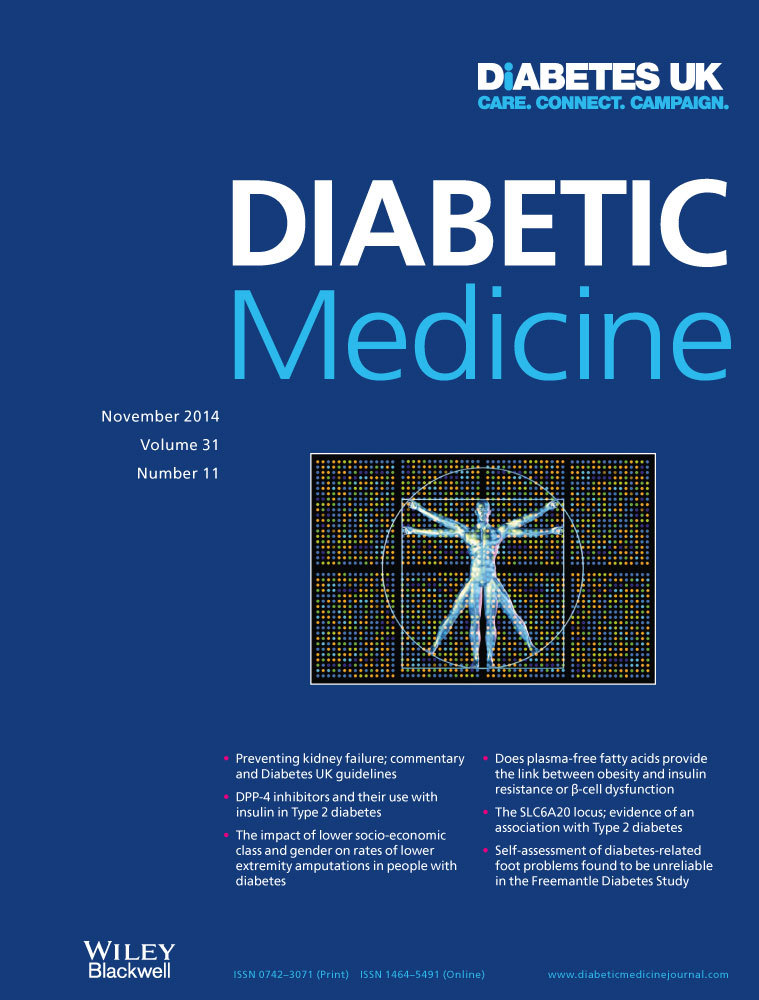Association between changes in body composition and risk of developing Type 2 diabetes in Koreans
Abstract
Aims
To examine the effects of longitudinal changes in fat mass or lean body mass on risk of Type 2 diabetes in Korean adults.
Methods
Participants included 18 687 Korean adults (aged 20–79 years) who underwent routine medical check-ups in 2007–2008 and again in 2011–2012 with a mean (range) of 4.3 (3.0–5.7) years interval. Total fat, fat-free, and soft fat-free masses were determined using bioelectrical impedance.
Results
A total of 692 subjects (3.7%) developed Type 2 diabetes during follow-up. Those who developed diabetes had a greater increase in percent body fat (2.9 ± 3.0 vs 2.6 ± 3.2 percentage points, P = 0.043), as well as greater decreases in percent fat-free mass (−3.0 ± 3.3 vs −2.7 ± 3.3 percentage points, P = 0.008) and percent soft fat-free mass (−2.8 ± 3.1 vs −2.4 ± 3.1 percentage points, P = 0.003) compared with those who did not develop diabetes. In multiple logistic regression analysis, an increase in total fat mass of > 10% was associated with an increased odds ratio for diabetes (1.29, 1.05–1.60), and a decreased total fat mass was associated with lower odds ratio (0.75, 0.58–0.96). A loss of total fat-free mass of > 5% (odds ratio 1.08, 0.90–1.30) or an increase in total fat-free mass (odds ratio 0.96, 0.71–1.28) was not significantly associated with the risk of diabetes after adjustments for baseline waist circumference and glucose levels.
Conclusions
These results show that changes in total body fat mass, but not lean body mass, are associated with development of Type 2 diabetes, independently of baseline measures of general or central obesity.




